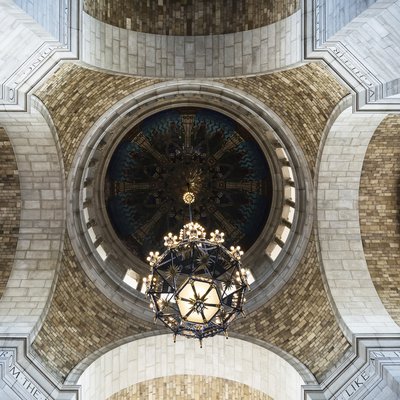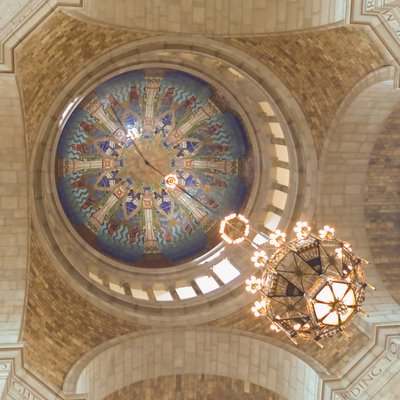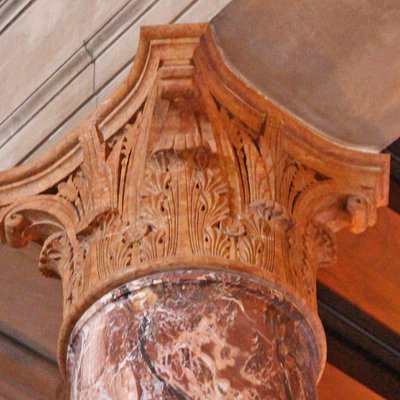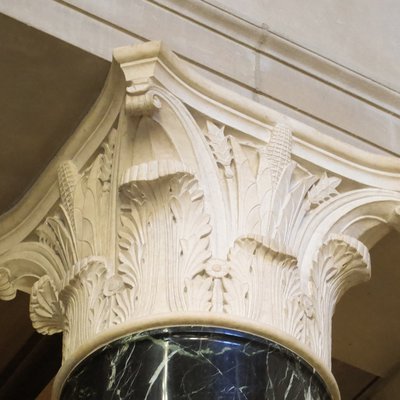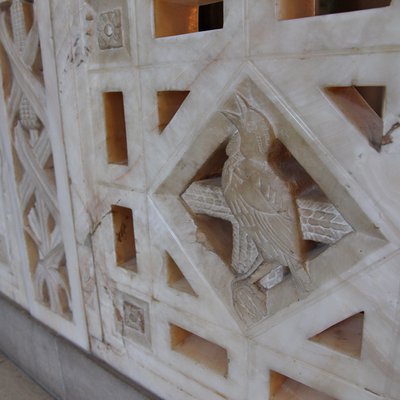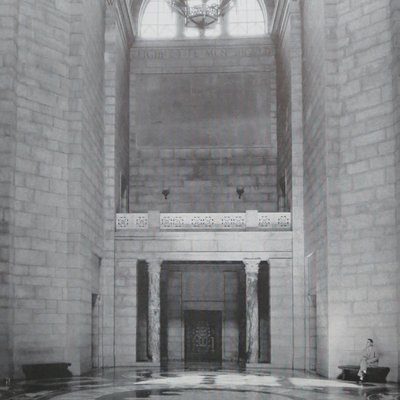CH 8
Rotunda
Nebraska's Resources
Take a Virtual Tour of the State Capitol. Click HERE to tour the Rotunda "Great Hall" of Nebraska's Beautiful Capitol.
The rotunda dome is the highest dome in the Capitol building. It's 112 feet from the floor--close to ten stories high. But the rotunda dome is not the top of the tower-- there are eight floors of offices above that!
The rotunda sits at the heart of the Capitol. Maybe that's why the Capitol builders chose to fill its dome with images of virtues-- eight female figures in a circle holding hands. The figures symbolize Temperance (which means self-control), Courage, Justice, Faith, Hope, Charity, Magnanimity (which means generosity), and Wisdom, all virtues that the philosopher Aristotle included in his system of ethics (ideas on moral living). Each figure has a pair of wings-- which can come in handy when you're 112 feet in the air!
The rotunda sits at the heart of the Capitol. Maybe that's why the Capitol builders chose to fill its dome with images of virtues-- eight female figures in a circle holding hands. The figures symbolize Temperance (which means self-control), Courage, Justice, Faith, Hope, Charity, Magnanimity (which means generosity), and Wisdom, all virtues that the philosopher Aristotle included in his system of ethics (ideas on moral living). Each figure has a pair of wings-- which can come in handy when you're 112 feet in the air!
source: Nebraska's Memorial Capitol, by Leonard Nelson
The chandelier has 136 light bulbs, weighs 3500 pounds, and has symbols of corn and arrows to represent Native Americans. It’s lowered once a year and all the light bulbs are changed; then it’s hand cranked back up into place. If the Rotunda is showing us Nebraska’s resources and the corn represents the plants we eat, what do the arrows represent?
The onyx railing around the Rotunda has carvings of a bison skull and the state bird, the Western Meadowlark. In between these carvings are tall caved panels with corn.
Lee Lawrie and Hildreth Meiere, the Capitol’s original artists, were the artistic judges that chose Kenneth Evett’s murals to fill the blank spaces on the Rotunda walls in 1956.
